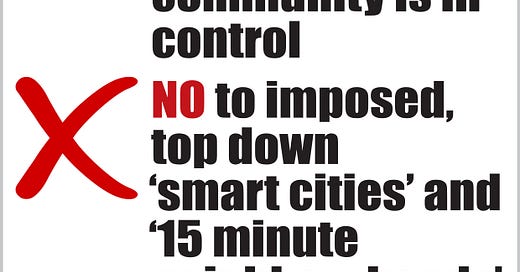Piecemeal 'solutions'?
We read this piece on B24/7 with great interest: Is Bristol gearing up to become a 15-minute city? 13.4.23. The resident featured in the B24/7, Rob Bryher, is campaigning to make the road in Easton he lives on, Chelsea Road, into a liveable neighbourhood. A component of that is making parts of the road car free and reducing traffic on other sections. Rob is undertaking consultations with the residents in the area. To his credit he admits that it is a case of balancing the differing needs of a wide range of people. That's a recognition of how complex the situation is.
The title of this post is 'Piecemeal 'solutions'? There's a reason for that. While Rob Bryher's scheme would undoubtedly improve the quality of life for residents along Chelsea Road, the question is, where will the traffic currently using that road go? The point we've made about low traffic neighbourhood schemes such as this is that unless there's a comprehensive city wide scheme to reduce the overall volume of traffic, all these schemes will do is concentrate the same volume of vehicles onto a smaller mileage of roads. Someone's liveable neighbourhood will make someone else's neighbourhood even more choked with traffic and pollution if the overall volume of vehicles isn't reduced.
We've been living down in the Avon region for almost nine months now and we have yet to see a glimmer of a comprehensive public transport and active travel strategy that will reduce the overall volume of traffic using the roads. A target has been set of halving car use across the region by 2030. There's a massive gulf between setting a target and having a strategy to meet it as we argued in this piece here: An impossible target? 23.3.23.
There are a lot of barriers to meeting that target. One is planning policy that for decades has assumed near universal car ownership, with the consequence being the sprawl of suburbs where car ownership is pretty much a necessity. Another is the state of public transport across the region. The bus services leave a lot to be desired. As for trains, there are whole swathes of Bristol that are not served by a railway. To put it bluntly, the public transport options that would entice people to leave their cars at home or even to get rid of them altogether simply aren't there.
There's also the change in retail with the rise of supermarkets which are sited in such a way that the majority of customers have to drive to them. Admittedly, this applies more to the outer suburbs and the overspill towns than it does to places like Easton where as Rob Bryher admits, residents are privileged in having a wide range of shops meeting their needs within easy walking distance. Even though we live just round the corner from the High Street in Keynsham, the choice of food shops we have is actually pretty limited compared to Easton.
Towards the end of the B24/7 piece, there's a more general discussion of the concept of 15 minute cities/neighbourhoods which takes in the opposition to them from a variety of people. Not all of who are 'right wing' or 'conspiracy theorists'. A fair number are rightly concerned about the level of surveillance and tracking technology that seem to be a feature of at least some of the larger scale schemes. As has been remarked by a few people we've talked to, the imposition of these schemes seems to be all stick and no carrot. An approach that will alienate people from any thoughts of creating genuinely liveable neighbourhoods.
It may seem that we're being negative about the concept of genuinely liveable neighbourhoods and reducing the overall volume of traffic on the roads. What we're actually being is realistic about the numerous obstacles to achieving those aims. We're also wary about the way a genuinely attractive concept is hijacked and twisted by those who presume to rule over us to impose ways of controlling people. The authorities trying to impose these traffic management and reduction schemes are actually the biggest obstacle to creating genuinely liveable neighbourhoods.
Last but by no means least, we do recognise that humanity has overshot the limits of the planet and that at some point, we collectively need to work out how we can pull back towards a more sustainable but also, satisfying and enriching way of living. This is what we tried to address with this post: The future of movement on a finite planet 20.2.23. Suffice to say, there's no easy way to that sane and sustainable future.






